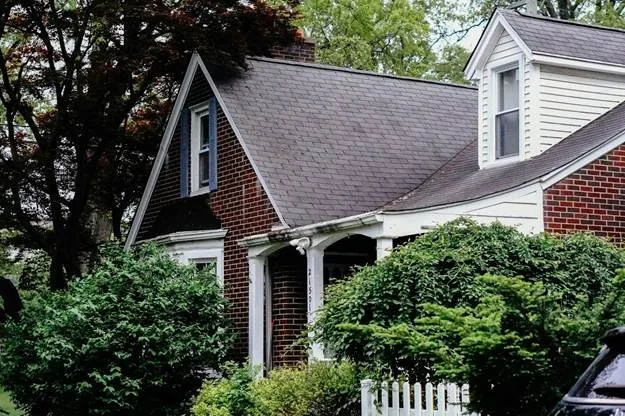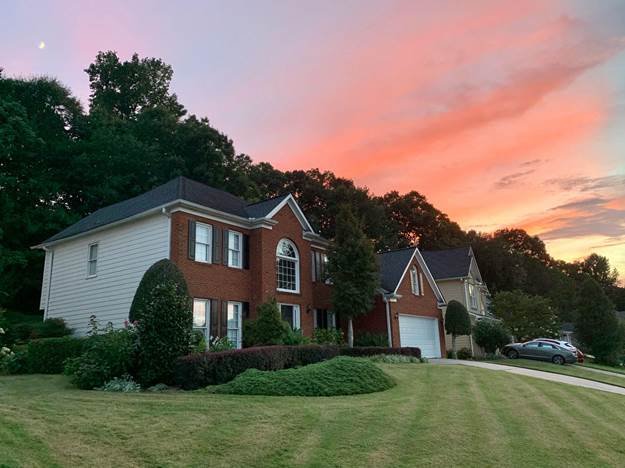Emergency Roof Repair Protocols: Your 24/7 Guide for King, Snohomish & Skagit Counties
You know that sound. The one that makes your stomach drop. It's not just rain drumming on the roof; it's the quiet, insidious drip… drip… drip… inside your home. In that moment, your house doesn't feel like a shelter. It feels vulnerable. And you're suddenly facing a flood of questions: Who do I call? How fast can they get here? What do I do right now to stop the damage? And honestly, what is this going to cost me?
It's a moment of pure chaos. We get it. As a local, family-owned roofing company, we've taken those frantic late-night calls for over 30 years combined. We've seen firsthand how a small leak can escalate into a catastrophe, especially during one of our notorious Pacific Northwest storms.
This isn't just another page telling you we're "fast and available." This is your emergency protocol. It's a clear, step-by-step guide designed specifically for homeowners in King, Snohomish, and Skagit counties. We'll walk you through exactly what to do, what to expect from the insurance process under Washington State law, and how to navigate local permit requirements to keep you safe and legal.
Think of this as the calm, expert voice you need in a crisis. Let's stop the water and get your home secure.
In This Guide: Your Emergency Action Plan
Our 24/7 Emergency Response Promise: The First 60 Minutes
ROOF LEAKING NOW? CALL US.
(425) 268-3003
Immediate Tarping Dispatch Guaranteed within 24 Hours to King, Snohomish & Skagit Counties. Our team is standing by 24/7.
When water is entering your home, promises aren't enough. You need a plan. The industry standard across the PNW for initial crisis response—getting a tarp on the roof to stop further damage—is within 24 hours. At Creative Roof Solutions, that's our guarantee. The moment you call, our protocol kicks in. We gather essential information, provide immediate safety instructions, and dispatch a crew to stabilize the situation.
The 4-Step PNW Emergency Protocol: From Chaos to Control
A roof emergency feels overwhelming, but the process to fix it shouldn't be. We've refined our response into four clear steps, so you always know what's happening next.
Step 1: Crisis Stabilization – What to Do Before We Arrive
Your safety is the absolute first priority. While our team is on the way, there are a few things you can do to mitigate damage safely.
Move Valuables: Carefully move furniture, electronics, and irreplaceable items out from under the leak.
Contain the Water: Place a bucket or plastic container directly under the drip. If the ceiling is bulging, do not stand directly underneath it. A bulging ceiling indicates trapped water, and it could give way. In this specific case, you can relieve the pressure by carefully poking a small hole in the center of the bulge with a screwdriver to allow the water to drain into your bucket in a controlled way.
Document Everything: This is critical for your insurance claim. Take clear photos and videos of the leak inside your home and any visible damage outside (if you can do so safely from the ground). The more evidence you have, the smoother your claim process will be.
DO NOT Go On the Roof: Please, for your own safety, do not attempt to climb onto a wet, storm-damaged roof. It's incredibly dangerous. Our crews are trained and equipped for these hazardous conditions. Wait for the professionals.
Step 2: Navigating the WA State Insurance Process
This is where many homeowners feel lost. Most roofers say they'll "help with insurance," but what does that really mean? For us, it means being your advocate, armed with knowledge of Washington State regulations.
Here's the key piece of information you need to know: According to the Washington State Office of the Insurance Commissioner, once you file a claim and submit a "proof of loss" form, your insurer has 15 working days to accept or deny your claim.
Our role is to provide you and your adjuster with every piece of documentation needed to get that clock started and ensure a swift, fair resolution. This includes:
A detailed report of the initial damage.
Clear photos of the temporary repairs (tarping).
An itemized receipt for the emergency service call.
A comprehensive estimate for the permanent repair.
We speak their language, which means less back-and-forth for you and a faster path to getting your roof restored.
Step 3: The Critical Permit Compliance Rule
Here's a detail that trips up many homeowners and even some contractors. You're in a crisis—the last thing on your mind is a building permit. And the good news is, you're right.
Municipalities across King, Snohomish, and Skagit Counties allow for emergency work to stabilize a structure (like tarping a roof) without obtaining a permit first. But here's the catch: A permit application for that work must be filed on the very first business day after the emergency repair was made.
Failure to do so can result in fines and major headaches down the line. It can even jeopardize your insurance claim.
This is our "First Business Day Permit Promise." We don't just fix the leak; we handle the compliance. We ensure the proper paperwork is filed with your local jurisdiction immediately, protecting you from any future legal or financial penalties. It's a small detail that makes a massive difference, and it's a non-negotiable part of our emergency protocol.
Step 4: From Temporary Fix to Permanent, Climate-Ready Repair
An emergency tarp is a critical bandage, but it's not a cure. Once the storm has passed and your home is dry, we shift our focus to the permanent solution. This involves a thorough inspection to assess the full scope of the damage—not just the obvious leak, but also any compromised underlayment, insulation, or structural components.
We then design a permanent residential roofing solution that isn't just a patch job. It's a comprehensive repair designed to withstand the next Pacific Northwest storm. We use high-quality materials from trusted brands like Owens Corning to ensure your home is protected for years to come.
County-Specific Storm Risks: Hyper-Local Intelligence for Your Area
Generic advice doesn't cut it here. The storm that hits North Bend is different from the one that batters Everett or Mount Vernon. Snohomish County alone has seen storm events cause over $18 million in public property damage—a testament to the unique and powerful weather patterns we face. Understanding these local nuances is key to effective emergency response. We are a local company, founded by a father and son with decades of experience right here in the PNW. This is our home, and as your neighbors, we know what to look for. You can learn more about our local roots by visiting our about us page.
King County: Urban Wind Tunnels & Debris
In dense areas like Seattle, Bellevue, and Kirkland, buildings create wind-tunnel effects that can dramatically increase wind speeds. This puts immense stress on shingles and flashing. We often see "wind-lift" damage where shingles are peeled back, leaving the underlayment exposed. After a storm, we also focus on inspecting for damage from airborne debris from neighboring properties and construction sites, which is a common issue in urban and suburban environments.
Snohomish County: Treelines, Wind & Ice Dams
From Everett to Lake Stevens and east toward the Cascades, the beautiful, mature trees that define our landscape are also a primary source of roof damage. A single fallen branch can puncture through multiple layers of your roofing system. The open spaces between developed areas can also allow wind to build up significant speed, leading to widespread shingle loss. In the colder months, we are particularly vigilant for ice dams, which can form at the edge of roofs and force water up and under your shingles.
Skagit County: High Winds & Flood Zones
Skagit County's geography, with its open farmland and proximity to the water, makes it susceptible to sustained high-wind events. For homes in these areas, the integrity of the entire roofing system is paramount. Furthermore, many parts of the county are designated as Special Flood Hazard Areas (SFHAs). If your home is in an SFHA, any storm damage repair has to comply with specific flood damage prevention ordinances, a layer of regulation we are deeply familiar with and prepared to handle.
Emergency Cost Transparency: What to Expect
In a moment of crisis, the last thing you want is a financial surprise. Let's be upfront about the costs.
An emergency call-out for a temporary tarping service in our region typically ranges from $800 to $1,500. This cost covers mobilizing a crew (often after hours or on a weekend), the materials used for the tarp, and the skilled labor required to install it safely and effectively to prevent further water intrusion.
This initial cost for the temporary repair is almost always covered by your homeowner's insurance policy because it's considered a necessary step to "mitigate further damage"—something all policies require. We provide a clear, itemized invoice specifically for this service that you can submit to your insurer for reimbursement.
We understand that even with insurance, an unexpected expense can be stressful. That's why we also offer flexible financing options to ensure you can get the immediate protection you need without financial strain.
Key Takeaways: Your Emergency Roof Repair Checklist
What is the first step in a roof emergency? Your safety. Move valuables, contain the water, and call a professional 24/7 roofer immediately. Do not go on the roof yourself.
How fast can I expect help? The industry standard is to have a temporary tarping solution in place within 24 hours. Creative Roof Solutions guarantees this response time.
Do I need a permit for emergency roof work? No, not before the work starts. But you or your contractor MUST file for a permit on the first business day after the work is done. We handle this for you.
How does insurance work? Washington State law gives your insurer 15 working days to respond after you submit your claim. We provide all the necessary documentation to get this process started quickly.
Frequently Asked Questions About Emergency Roof Repair
Is an after-hours emergency repair more expensive?
Yes, there is typically an emergency call-out fee for services outside of regular business hours, on weekends, or during holidays. This covers the higher cost of mobilizing a crew on short notice. However, this fee is a standard part of an emergency claim and is typically covered by your insurance provider.
My leak seems small. Should I wait until morning?
We strongly advise against waiting. A small drip can be a sign of a much larger area of saturated insulation and weakening drywall. Water can travel, and by morning, a small spot could become a collapsed section of ceiling, leading to far more extensive and expensive interior repairs. It's always better to act immediately.
Will you deal with my insurance company for me?
We work with you and your insurance company. While we cannot legally file the claim for you, we act as your expert partner. We provide your adjuster with all the detailed reports, photos, and estimates they need in the format they require. This proactive approach helps streamline the process and demonstrates the full scope of the necessary repairs, ensuring you get a fair settlement.
Take the First Step to a Secure Roof
That sound of dripping water is a call to action. You don't have to face it alone. You need a partner who can respond instantly, navigate the complexities of permits and insurance, and provide a permanent solution that protects your home and your family.
We are ready to help, right now.
If your roof is compromised, don't wait another minute. Contact us 24/7 for immediate dispatch. Let our family help yours.




